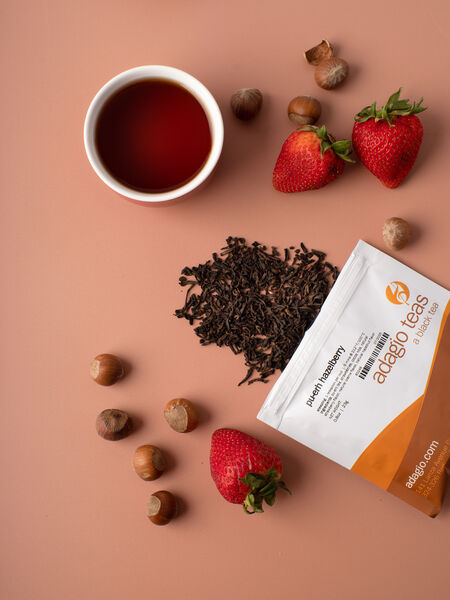Fiddling with Temperatures: Why Brewing Matters


If you ever brewed your first cup of fresh green tea with boiling water, you understand how critical the correct water temperature is to eliciting the best of what a tea can offer. Too hot a temperature, and the polyphenols and antioxidants will be compromised, causing bitterness; too cool a temperature for some teas will mean the complexity and nuance are lost.
Vendors spend a lot of time and tasting efforts to determine guidelines for brewing each of their teas, so the first caveat is to follow your vendor’s suggestions in determining water temperature and brewing time. If those directions please you, great; if not adjust to your taste.
Remember, the only palate you need to please is your own.
Making a great cup of Camellia sinensis or herbal teas requires using good quality water heated to the correct temperature, then brewing the right quantity of leaves the right amount of time. A general rule for tea quantity is 1 level teaspoon of small dense leaves for 8 ounces of water. For larger leaves, like oolongs or large greens like Tai Ping Hou Kui, use 2 teaspoons of tea to 8 ounces of water. For more intense flavor, use 6 ounces of water.
For metric lovers, and exceptional accuracy, use 3g of tea (weigh on reliable food or tea scale) for 237ml of water (slightly more than 200 ml as marked on most glass measuring cups.) Adjust to your taste.
CAUTION: While boiling water is recommended for brewing herbals, some blacks, and ripe pu erhs, it is hot, so allow the liquor to cool slightly before brewing to avoid burning your palate.
WHITES, YELLOWS and GREENS
Generally, you’ll brew a great cup of tea in this category if the water is heated from 150 to 180°F, however, the more delicate the tea, the cooler the water should be.
For Chinese greens, brew in the 160-185°F range; for Japanese green teas, lower temps from 140-185°F are best. For yellow tea, 165-180°F, and white tea, use a slightly higher range, 170-185°F.
Also, consider the tea source. If whites are from China, follow our suggestions; if whites are from Sri Lanka or India’s Darjeeling or Nilgiri states, hotter temperatures can be supported.
Variable tea kettles offer the ease of choosing exact temperatures, although these temperatures vary with manufacturers and are not standardized. When in doubt, err on the side of the lower number. That means if your kettle has a designation for 180°F and the tea vendor suggests 185°F, go with the kettle’s 180°F level. Should you heat water at a higher temperature than recommended, allow it to cool to the suggested temperature before brewing the leaves.
No electric kettle? Boil water in a conventional stovetop kettle, pour into a heat-safe pitcher, and allow the water to cool, about 10 minutes to bring the temperature down to brew your white, yellow or green tea. To insure water temperature accuracy, use a candy thermometer. They’re inexpensive and last for years.
Brewing times for these three delicate teas cover a wide range from 30 seconds up to 7 minutes with longer times for subsequent steepings. When in doubt, start with 30 seconds for Chinese whites, yellows, and greens; 45-60 seconds for Japanese or Korean greens. You can always steep longer, but with any tea new to you, start with short times and taste as you brew.
PU ERHS
In China, to cool boiling water is kai shui or “opening the water” to bring out the best of the flavor in a tea, particularly blacks or darks (pu erhs). Using a heat-safe pitcher or a cooling bowl cools down the water and may eliminate chemicals in municipal sources if spring waters are not available to you.
Up to the 1970s, boiling water was always used for pu erhs because the only choice was a ripe pu erh. Today, you can buy both ripe (shou) and raw (sheng) pu erhs. Each requires different water temperatures. Brew ripe pu erhs with water heated from 205-212°F and raw pu erhs with slightly cooler temperatures, from 190-205°F. The longer either is brewed the deeper the flavor but typical brewing time is 3-6 minutes. It is rare that pu erhs, raw or ripe, offer any astringency. Subsequent infusions are common and slightly longer brewing times are typical.
BLACKS
For fully-oxidized teas, most vendors suggest boiling water (212°F) and 3 to 5 minutes of brewing time, but there is plenty of room for experimentation. Try 200-205°F and brew 3 then 4 then 5 minutes, tasting a teaspoon of tea each time to see how the flavor treats your palate. Once you decide what’s perfect for you, use that temperature as your benchmark.
OOLONGS
Unlike other tea categories, oolong leaves should be rinsed with hot water to rid it of any dust or fannings. Don’t let this water sit on the leaves; pour on the water, swirl it around the leaves, then discard the water. The correct temperature for brewing relies upon how much oxidation your choice of oolong which ranges from 2 to 80% with a variety in taste from a green-like tea flavor in to deeper, richer flavors with a higher rate of oxidation.
Again, follow the vendor’s suggestion or opt for a general range of 150-195°F for lightly processed oolongs, and 190-205°F for mid to highly oxidized samples. Brewing times from 3 to 6 minutes are not uncommon and fine oolongs offer multiple infusions.
HERBALS and ROOIBOS
Because these choices are flowers, plants, herbs, or bark, boiling water (212°F) will release the flavor and fragrance completely, and it is rare to taste any bitterness. Allow these to brew at least 5 minutes so that the temperature is gentle on the palate. A safe alternative is 205°F.
Brew green rooibos at lower temperatures than classic red bush varieties (plain of flavored).
NOTE: For the most flexible range of temperatures in an electric kettle, consider the Smart Electric Kettle from Lardera
